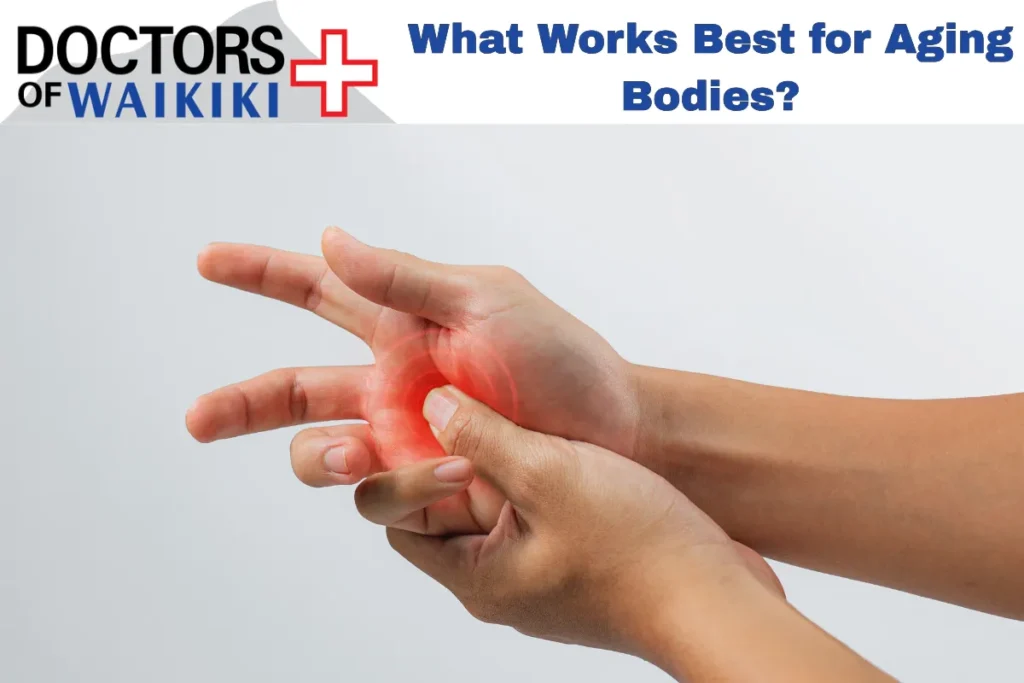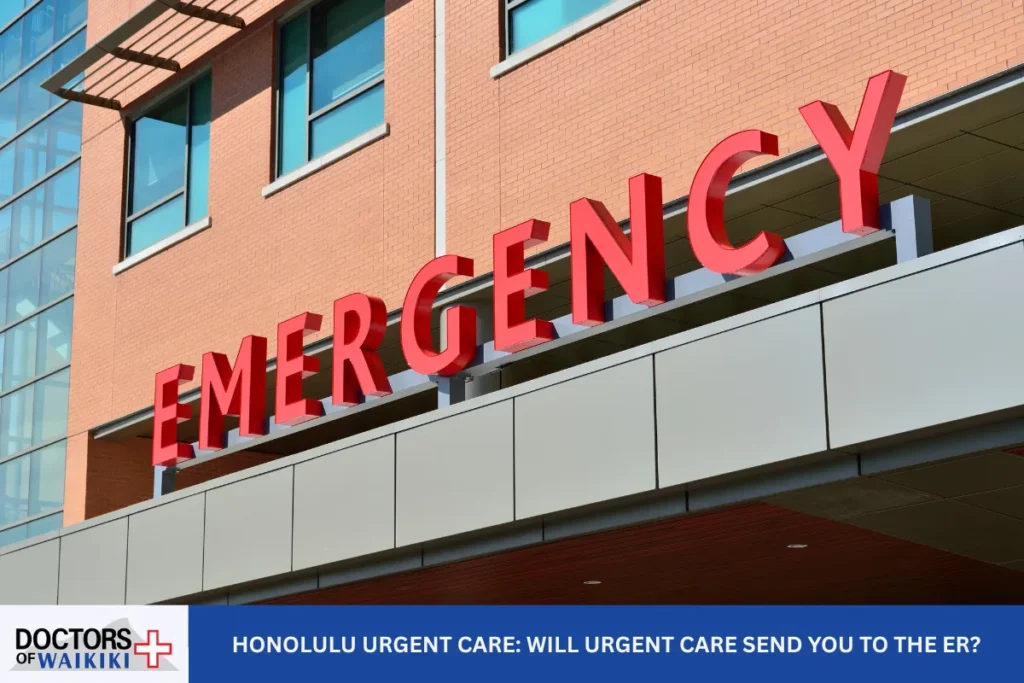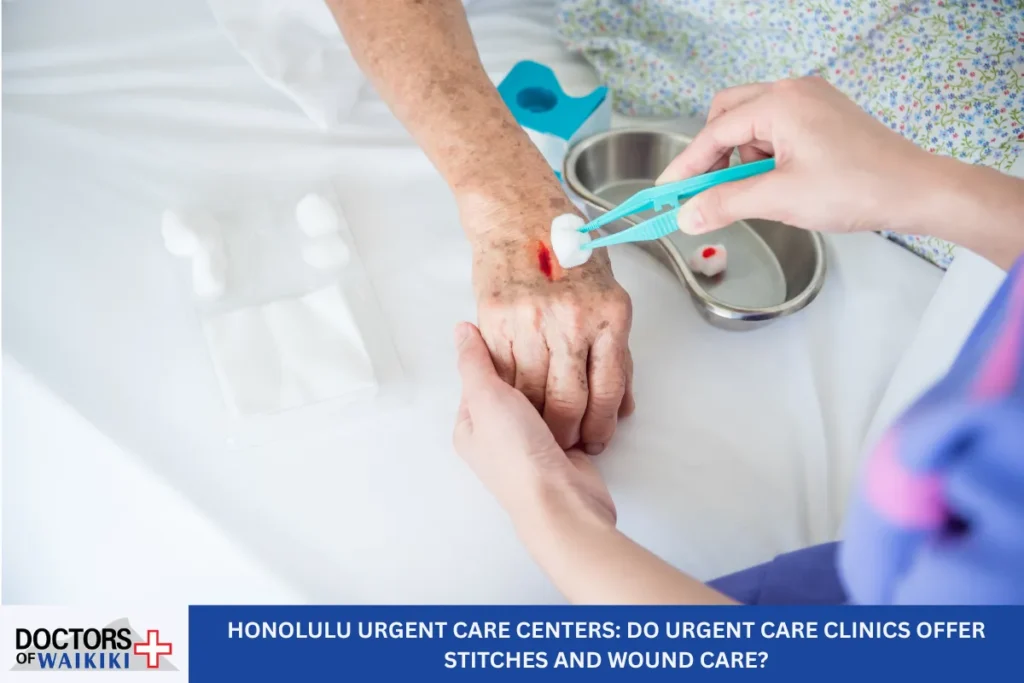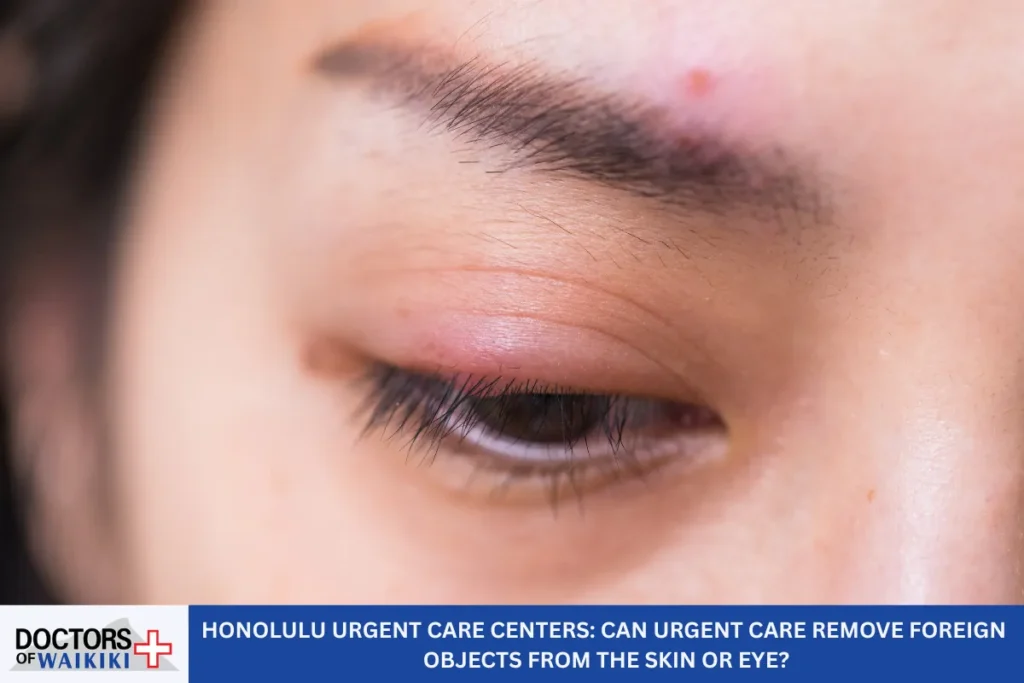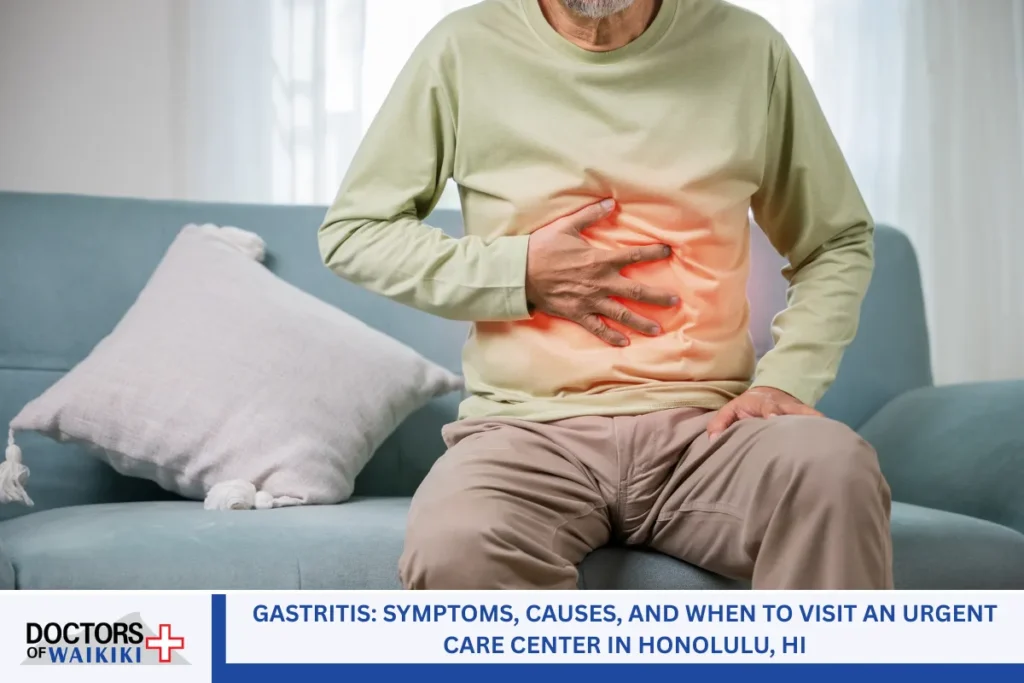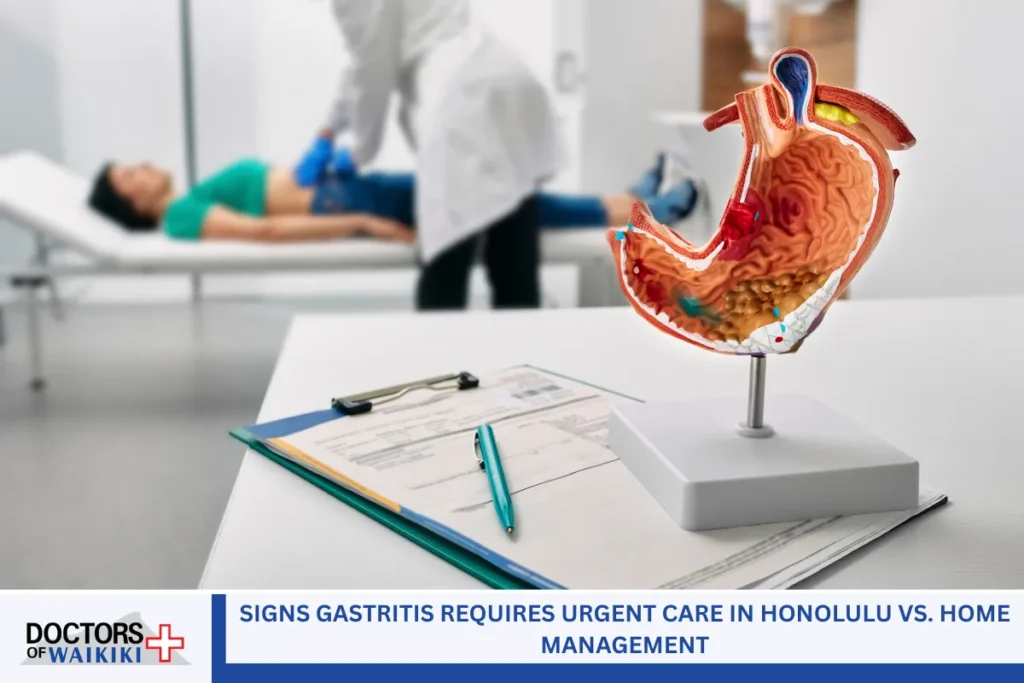Are you finding that the aches and pains of getting older in Honolulu are becoming a real problem? It can be so frustrating when persistent discomfort stops you from enjoying your favourite activities and makes everyday life feel like a struggle. You might be wondering where to turn for help and what actually works for aging bodies.
Well, the good news is that there are dedicated pain management doctors and pain clinics right here who are experts in helping seniors like you find relief. Keep reading, because I’ll be diving into the different ways a pain management physician at a pain control clinic can assess your pain and the many treatment options available, from gentle exercises to medications and other helpful therapies. Understanding these options is the first step towards feeling better!
Why Do Older Folks Have More Pain?
As we age, our bodies go through some changes. Sometimes, this can lead to things like arthritis, which makes our joints sore. We might also have nerve pain from things like diabetes or shingles. Even old injuries or surgeries can still cause pain.
Sometimes, older adults don’t tell people about their pain. They might think it’s just a normal part of getting older, or they might be worried about taking too many medicines. But it’s important to talk about your pain because when pain isn’t treated, it can make it harder to move around, sleep well, and even feel happy.

Getting Help from a Pain Management Doctor or Pain Specialist
If your pain is really bothering you, it’s a good idea to see a doctor. Sometimes, your regular doctor might suggest you see a pain management specialist. These doctors are experts in helping people with long-lasting pain. You might also find help at a pain clinic, which are places that have different kinds of treatments and doctors who focus on pain.
How Can We Figure Out What Kind of Pain It Is?
To help you, the doctor will want to know all about your pain. They might ask you to describe it using words like “aching” or “burning”. They might also ask you to rate your pain on a scale from 0 to 10. Sometimes, if it’s hard to talk about your pain, like if you have trouble remembering things, your caregiver or family can help by telling the doctor what they’ve noticed. For example, they might see that you’re moving differently or seem more upset.
Lots of Ways to Make Pain Feel Better
There are many different ways to help manage pain, and what works best can be different for everyone.
Medicines
Doctors can prescribe different kinds of medicines to help with pain. Some common ones are acetaminophen (like Tylenol), which is often a first choice. There are also non-steroidal anti-inflammatory drugs (NSAIDs) like ibuprofen, but these need to be used carefully, especially by older adults. For nerve pain, doctors might use medicines like gabapentin or pregabalin.
Sometimes, antidepressants can also help with certain types of pain. Muscle relaxants might be used for muscle pain. Opioids are stronger pain medicines, but doctors use them carefully and usually only when other things haven’t worked. It’s super important to talk to your doctor about any medicines you take because older bodies process medicines differently and there can be side effects.

Things You Can Do Without Medicine (Non-Pharmacological Treatments)
There are lots of other ways to help with pain that don’t involve pills.
- Moving Your Body: Physical therapy and exercise can make you stronger and more flexible, which can really help with pain. Even gentle exercises like walking or swimming can make a big difference. Just be sure to talk to your doctor before starting a new exercise plan.
- Hands-On Help: Things like massage, acupuncture, and chiropractic care can also help some people with pain.
- Mind and Body: Learning ways to relax your body and mind, like through deep breathing, meditation, or cognitive behavioral therapy (CBT), can help you cope with pain better.
- Heat and Cold: Using ice packs or heating pads can sometimes ease pain.
- TENS Units: These are small devices that use mild electrical pulses to help block pain signals.
- Injections: Sometimes, doctors will give injections of medicine directly into a painful area, like a joint.
Learning and Support
It can be really helpful to learn more about your pain and how to manage it. There are even classes and workshops that can teach you different ways to cope. Talking to other people who also have chronic pain can make you feel less alone and give you new ideas.
Working Together to Feel Better
The best way to manage pain is to work closely with your doctors, caregivers, and family. By talking openly about your pain and trying different treatments, you can find ways to feel more comfortable and live a fuller, more active life, right here in Honolulu.
A Brighter, Less Painful Tomorrow is Possible
Living with pain as you get older doesn’t have to stop you from enjoying life. By understanding what causes pain, talking to your doctor or a pain management specialist at a pain control clinic, and exploring different ways to treat it, you can take charge of your health and find relief. Remember, you deserve to feel your best in your golden years!

Pain Management Honolulu – Doctors of Waikiki
Are you a senior in Honolulu experiencing persistent aches and discomfort that limit your enjoyment of life? Do you find that the pain in your joints, back, or muscles feels like an inevitable part of aging? At Doctors of Waikiki, we understand that chronic pain doesn’t have to dictate your lifestyle. Unlike the feeling that nothing can help, we offer proactive and innovative pain management solutions specifically designed for aging bodies right here in Honolulu.
We provide advanced therapies such as PRP injections and shockwave therapy, which can help address the underlying causes of your pain and improve your mobility. Don’t let pain reduce your quality of life or lead to avoidance of activity. Contact Doctors of Waikiki today at (808) 922-2112 to learn how our specialised treatments can help you find meaningful relief and get back to enjoying your golden years to the fullest.
Frequently Asked Questions About Pain Management for Seniors
Why is it sometimes difficult for older adults to get their pain properly assessed and treated?
Pain in older adults can be unrecognised and undertreated for several reasons. Some older individuals may believe that pain is a normal part of aging and therefore don’t report it to their doctors. Others might have difficulties communicating their pain clearly due to physical impairments like visual or hearing loss, or cognitive impairments such as confusion, memory loss, or dementia. This can make it challenging for healthcare providers to accurately evaluate their pain.
Furthermore, both patients and practitioners may have concerns about the side effects of pain medications, especially opioids, including the risk of respiratory depression, addiction, and falls. The fact that many older adults take multiple medications for various health conditions (polypharmacy) also raises concerns about potential drug-drug interactions. In some cases, patients may even under report pain out of fear that it signifies a serious condition or will lead to more tests and treatments.
What are some common types of chronic pain that affect older adults?
Older adults commonly experience chronic pain arising from various conditions. Musculoskeletal pain, originating from muscles, bones, or joints, is very frequent, with osteoarthritis being the most common form. Neuropathic pain, which stems from damage to the nervous system, is also prevalent and can be associated with conditions like diabetes, shingles, cancer, or surgery. Additionally, chronic pain can be a result of other chronic diseases such as congestive heart failure, renal disease, and pulmonary obstructions. Pain can also persist after joint and skeletal surgeries, and be caused by arthritis, deteriorations, compressions, and fractures.
How can caregivers help older adults manage their chronic pain?
Caregivers play a significant role in finding chronic pain relief for their loved ones. They can be the most useful source of information and advocacy for a multidisciplinary approach to pain assessment, diagnosis, and management. By engaging with healthcare providers such as physical therapists, physicians, psychologists, psychiatrists, and in-home care providers on behalf of the older adult, caregivers can help ensure that their pain is reported and treated appropriately to maximise quality of life.
Caregivers can also be active observers of their loved ones, especially if cognitive decline hinders accurate pain description. Changes in agitation, functional status, body posture, gait, and social isolation can be indicators of heightened or chronic pain that caregivers can bring to the attention of healthcare professionals. Furthermore, caregivers can educate themselves and their loved ones on pain management strategies and support them in exploring both pharmacologic and nonpharmacologic treatment options.
What are some non-medication options that can help seniors with chronic pain?
Many older adults can benefit from nonpharmacological approaches to manage chronic pain, even if they are also taking medication. These options include:
- Physical therapy and exercise programs to improve physical function, strength, and flexibility. Even light exercise can be beneficial. It’s important to consult a doctor before starting a new exercise program.
- Osteopathic manipulative treatments for a holistic approach to pain reduction and increased function.
- Cognitive-behavioural therapy (CBT) to help develop coping and prevention skills for chronic pain.
- Massage therapy for pain relief and relaxation. Gentle massage may be suitable for some older adults.
- Acupuncture, which may be effective for certain types of pain.
- Chiropractic care, which involves spinal adjustments and other techniques. Gentle adjustments are often tailored for seniors.
- TENS (Transcutaneous Electrical Nerve Stimulation) units, which use mild electrical pulses to reduce pain.
- Heat and cold therapy applied to painful areas.
- Relaxation techniques, such as deep breathing and meditation.
- Hypnosis, which has shown promise in reducing chronic pain.
- Myofascial release therapy (MFRT), which involves sustained pressure on restricted fascial layers and can sometimes be self-administered.
- Localized therapies like joint and trigger-point injections.
Are there any workshops or classes in Honolulu that can help seniors manage chronic pain?
While the sources don’t specifically list workshops in Honolulu, AgeWays offers Chronic Pain Management classes based on the PATH (Personal Action Toward Health) model, an evidence-based approach for coping with chronic conditions. These workshops meet weekly for six weeks and are held in community venues. Participants learn skills such as making action plans, problem-solving, dealing with difficult emotions, relaxation, managing pain and fatigue, making informed treatment decisions, and working better with healthcare professionals.
You might want to check with local senior centres or healthcare providers in Honolulu to see if similar programs are available in your area. The NCOA Wellness and Pain Relief Program is another example of a program that has shown positive outcomes in increasing pain management knowledge and decreasing reported pain in older adults. While this specific program may not be widely available in Honolulu yet, it highlights the effectiveness of participatory learning and support groups.
What are some things to keep in mind when considering pain medication for older adults?
When considering pain medication for older adults, it’s crucial to consult with a physician due to the higher risk of adverse drug reactions in this population. Age-related changes in kidney and liver function can affect how medications are processed and removed from the body, potentially leading to increased side effects. Doctors often start with the lowest effective dose and increase it slowly if needed.
Certain pain medications, like NSAIDs, should be used cautiously and often for limited durations due to potential gastrointestinal, cardiac, and renal risks. Muscle relaxants should generally be avoided in those over 65 due to the risk of side effects.
While opioids can be helpful for severe pain that doesn’t respond to other treatments, they need to be used with caution and close monitoring due to potential side effects like constipation, nausea, dizziness, sedation, increased risk of falls, and respiratory depression.
It’s also important to be aware of potential drug interactions, especially if the individual is taking multiple medications. Acetaminophen is often a first-line option for mild, persistent pain, but the dosage should be carefully managed to avoid liver issues.
How can I find a pain management doctor or pain clinic in Honolulu?
The sources do not provide a directory of pain management doctors or clinics in Honolulu. However, here are some general ways you can find one:
- Ask your primary care physician for a referral to a pain management specialist or a pain clinic in your area.
- Check with your health insurance provider for a list of in-network pain management specialists and clinics in Honolulu. Many insurance companies have online directories.
- Search online using terms like “pain management doctor Honolulu,” “pain clinic Honolulu,” or “pain control clinic Honolulu.” Be sure to check the credentials and reviews of any healthcare provider you find.
- Contact local hospitals and medical centres in Honolulu, as they often have pain management departments or can provide referrals.
- Senior centres or aging support organisations in Honolulu might have information or resources for finding pain management services.
Read Interventional Pain Management: When to Consider Injections and Nerve Blocks

